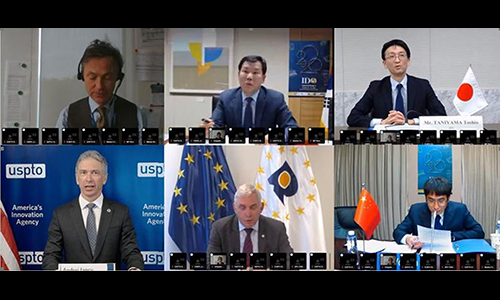By Gregor Burkhart, Principal scientific analyst — prevention, EMCDDA
When the EMCDDA began its operations in 1995, it was clear that the understanding and narrative on prevention had to change. What was needed was a cultural shift from a rather amorphous concept — often based on good intentions — to a prevention that was more scientifically sound, rooted in clear concepts and evidence of effectiveness, and that could improve real-life practice and decision making. This month, Gregor Burkhart, Principal scientific analyst for prevention at the EMCDDA looks back on key milestones of the past 25 years of monitoring in this field.
1995–2000: Promoting basic evaluation
When the EMCDDA started monitoring drug prevention in 1995, the level of evaluation of prevention interventions in Europe was low. This prompted us to focus first on promoting evaluation skills and tools in the prevention workforce and on awareness-raising on the importance of drug prevention among policymakers. One of our first steps was to develop the Exchange on Drug Demand Reduction Action (EDDRA)(1997) — a database of demand reduction interventions with minimum levels of evaluation — and to launch EMCDDA guidelines for the evaluation of drug prevention (1998). These early days also saw the organisation of the ‘First European Conference on the Evaluation of Drug Prevention’ (Lisbon, 1997) — the findings of which were published in the monograph Evaluating drug prevention in the European Union (1998) — and the ‘Second European Conference on the Evaluation of Drug Prevention’ (Strasbourg, 1999).
2001–2005: Better describing and classifying prevention interventions
In order to facilitate evaluation, our next step was to launch the Evaluation Instruments Bank in 2001, offering easy-access tools for evaluating prevention and treatment. EDDRA was also growing at this time and was adopted by most EU Member States, including some of those entering the EU in 2004. In this period, we introduced the concepts of ‘universal’, ‘selective’ and ‘indicated’ prevention (in EMCDDA and EU official documents), began mapping manual-based prevention programmes and developed systematic prevention categories, allowing interventions to be rated and compared. At this point, we played an active role in establishing the first multi-country randomised prevention trial in Europe — the European Drug Addiction Prevention Trial (EU-DAP) — and its associated Unplugged programme, which is still used worldwide today.
2006–2010: Developing the evidence base for prevention
In this next phase, we called for more responsibility and caution vis-à-vis the potential harms of mass media prevention campaigns. We also pioneered work explaining the potential of the little-known and under-used indicated prevention, dedicated to addressing personal neuro-behavioural vulnerabilities before problem substance use occurs. EDDRA expanded at this time as clearer categories of evaluation were introduced. Via an EU-funded project, the EMCDDA was instrumental in developing the European Drug Prevention Quality Standards (EDPQS), which set out criteria on how best to implement relevant and effective prevention. We also participated in the UNODC working group to establish International Standards on Substance Use Prevention and published the Prevention and Evaluation Resources Toolkit (PERK) to help professionals prepare their interventions for entering EDDRA.
2011–2015: Promoting the evidence base and prevention science
As co-founder of the European Society for Prevention Research (EUSPR), the EMCDDA hosted the 2nd International Conference of the European Society for Prevention Research (EUSPR) in Lisbon in 2011. Here we presented a ‘how to’ guide on conducting high-quality drug prevention in the form of the European drug prevention quality standards: a manual for prevention professionals, which became a reference for the EU Minimal standards on Demand Reduction. During this period, we coined the concept of ‘environmental’ prevention, showcased evidence for prevention strategies in the Best Practice Portal and began publishing comparable data from all Member States in the EMCDDA prevention profiles, reaping the rewards of having harmonised and standardised rating criteria and prevention categories in previous years.
2016–2020: Taking evidence into the field of practice and decision-making
In order to help decision-makers select effective programmes, the EMCDDA launched in 2017 its Xchange registry of interventions that have undergone rigorous scrutiny of their evidence for effectiveness, together with reports of their implementation. It also began hosting that year, an online Healthy Nightlife Toolbox (HNT), providing information on good-practice interventions targeting drug and alcohol use and related problems among young people in nightlife settings. Technical reports were also published in this period on ‘environmental’ prevention and its level of application in Europe (2018) and on exploring a systems perspective in the field (2019). Advancing the professionalism of the drug prevention workforce in Europe was the focus of a new European Prevention Curriculum (EUPC) handbook published by the EMCDDA in 2019, as part of the EU-funded UPC-Adapt project. This resource is now the basis for face-to-face, online and e-learning training courses and for EMCDDA-delivered cascaded training in European countries and beyond to help local decision-, opinion- and policy-makers improve their decision-making. The EUPC training was rolled out in 2019 and 2020 in a quarter of the EU Member States.
Beyond 2020
Looking back at the past 25 years, much progress has been made in Europe in developing responsible and evidence-based interventions in substance use prevention. Yet, prevention practices for which there is little, or no, evidence of effectiveness are still being implemented in school and community settings today. This is why it is crucial to develop a professional prevention workforce that values prevention science and is trained in, and knowledgeable about, approaches that are empirically tested, safe and likely to yield results. In the coming years, the agency will expand its provision of EUPC training to frontline professionals, increase the use of online and digital approaches to reach and engage with the prevention workforce in European countries and continue to develop the knowledge base in the areas of effective environmental and crime-prevention interventions.
The full range of EMCDDA resources is available on a prevention topics page.

